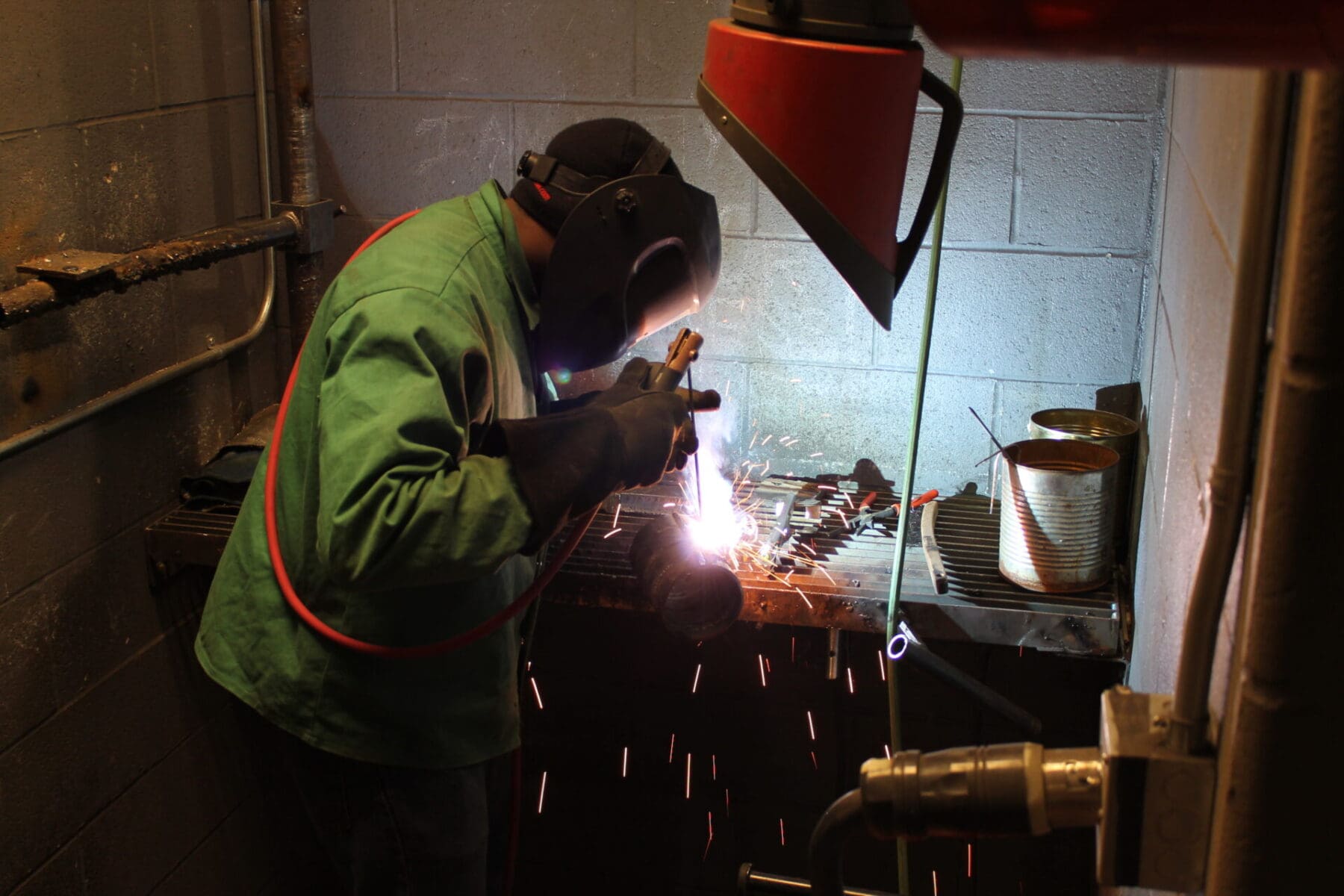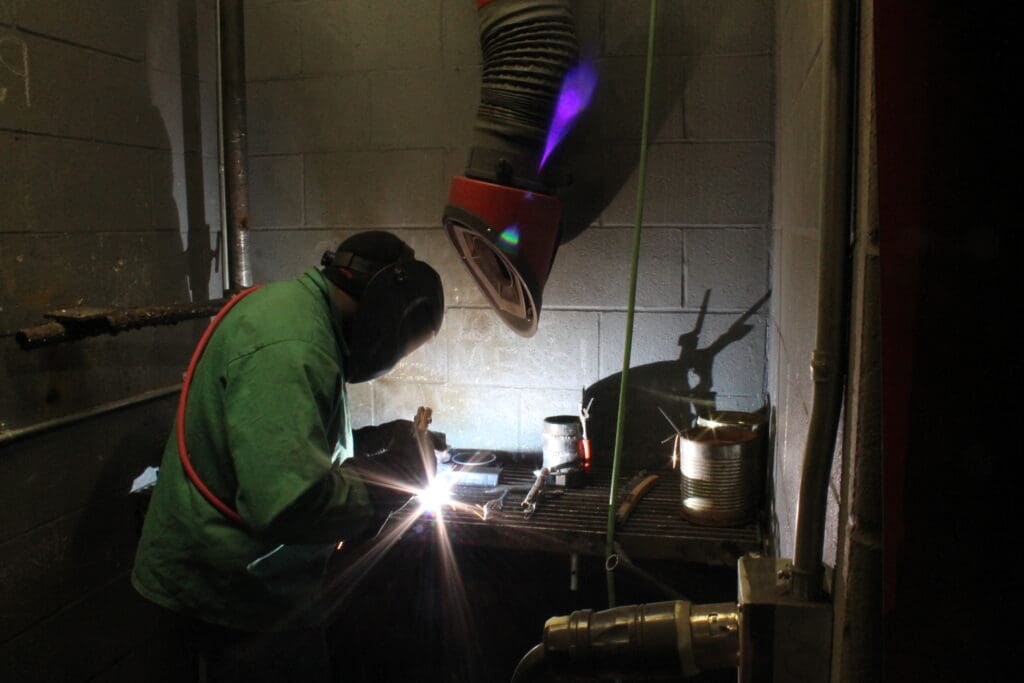Welding is a rewarding and potentially dangerous activity whether you weld on your own as a hobby, are beginning your welding career, or have years of experience as a trained professional in the field. Continuously learning and researching welding tips will help you stay safe, efficient, and precise with your welding methods. Here are 10 welding tips for professionals as well as those just starting.
Top 10 Welding Tips and Tricks for Beginners & Professional Welders
1. Never Forget About Safety Measures
One of the most important welding tips for beginners is that personal safety and welding go hand in hand. One should never be without the other. Welders are exposed to a variety of hazards that can affect them as well as others around them.
When safety measures are ignored, you become exposed to potential harm such as:
- Physical injuries
- Dangerous fumes and gas
- Electric shock
- Fire
- Explosions
- Other risks
2. Use an Adequate Working Area
Remove clutter from your work area and stay organized. Know where the necessary tools and equipment are for your specific task. Not only will it increase your efficiency, but it is also vital to know the location of fire alarms, emergency exits, fire extinguishers, sand buckets or other equipment you may need in case there is a fire or other emergency.
3. Get Comfortable Before Starting
It is important to know how to operate the type of equipment you are using. Do not use it without knowing the proper guidelines and techniques and be sure to follow all safety guidelines procedures.

4. Know the Correct Specs for the Job and Your Equipment
Be aware of the right equipment and techniques for the job at hand. If machines are used inappropriately or incorrectly, not only will the project not be completed correctly, but it may also expose you, as well as others, to potential harm.
5. Get a Machine That Fits Your Style and Skill Level
Study the types of welding machines and other equipment based on your experience level. Stick to a simpler machine that you are comfortable with using if you are more of a novice welder.
6. Snip the Wire Before Welding
After MIG welding, a tiny molten ball forms at the tip of the wire, causing the ball to be thicker than the wire itself. This means the wire needs more energy to start the weld puddle which can lead to spits and sputters. Cut the end of the wire to get rid of this issue.
7. Practice Your Strokes
Spending as much time and experience welding as possible is crucial for beginning welders and professional welders honing their craft. The more time committed to the process, the more comfortable, efficient, and confident you will become.
8. MIG Welding Tips
Metal inert gas welding relies on feeding a continuous spool of hot metal wire to melt two other metal components together.
- Ensure your wire is feeding properly – Determining the right drive roll is vital to your wire’s continuous feed. Make sure you have the right amount of tension. Bending in the wire is also a way to lose tension, so keep the gun as straight as possible.
- Know which gas accommodates your wire – The gas you select depends on the project. It is usually argon, carbon dioxide, or a mix of the two gasses. The contact tip recess you use also varies, but generally the size of the recess should increase with the amount of current.
- Point your wire at the leading edge of the weld puddle – Keep your electrode pointed at the leading edge of the weld pool to ensure the best accuracy during MIG welding. If welding in an awkward or unusual position, use a wire with a smaller diameter for a smaller weld pool and minimize the drip.
9. TIG Welding Tips
Tungsten inert gas welding uses tungsten electrode aided by a shielded gas, usually argon or helium, to fuse metal. It is more precise than MIG welding but also requires more time.
- Clean your metal before welding – If the metal you want to weld is rusted, scaled, or painted, it is more easily compromised. Polish the metal alone may look tacky, so grind the metal down before you start to ensure a professional finish.
- Make sure your tungsten electrode is the right length – The proper electrode rod length is crucial for your final project. If the tip is too close, you won’t be able to see where the welding is taking place. However, if the tip is too far away, the concentration of heat will not be strong enough and will likely melt your rod into the weld.
10. Keep Up to Date With Welding Advancements
Lasers, robotics, digitization, and sustainable practices are innovations that are moving the welding industry forward. The more you stay educated, the more prepared you will be for state-of-the-art improvements and trends in this important and impactful industry.
What Is Welding? Learn the Definition, Types, and Process
Discover the world of welding at Erie Institute of Technology and master its definition, types, and processes through our dynamic program.
Welding Safety Tips
- Study safety procedures – Follow the guidelines recommended by OSHA and be aware of your surroundings to minimize risk.
Have a spotter – Having someone watch you while you work provides another set of eyes that can help reduce potential hazards.
Check your ventilation – Breathing clean air while you work is crucial. Always wear an approved respirator to protect your lungs from dangerous fumes and gas while you work.
Follow manufacturer guidelines – Be sure to know how to properly use the tools and equipment needed for the project, as welding can cause physical injuries to you and those around you.
Wear the right personal protective equipment – Wear proper protection for ears, eyes, face, feet, heat and radiation, fumes, and electrical shock
Benefits of Being a Welder
If you love working with your hands in a creative, yet challenging way, welding may be a hobby for you. If you choose to pursue a career in welding, it can lead to a job in a high-demand field with job security, competitive wages, and potential travel opportunities.
Become a Skiller Welder in Erie, PA
At the Erie Institute of Technology, you can earn a diploma from our Welding Technology program in 12 months. After the completion, students will be qualified for entry-level employment in the welding field. Positions include Welder, Welding Specialist, Welding Technologist or Welding Engineer.

10 Welding Tips and Tricks for Beginners and Professionals
Frequently Asked Questions
Is being a welder a good career?
Welding is a valuable and high-demand profession that provides services to several industries, offering stable employment and higher wages because of the skills of the trade.
Is a welding job hard?
Welding is often done in tight, constricting areas and may be physically challenging. It also requires focus and precision for long periods. This is because the welds need to be precise and properly secured.
Is welding easy to learn?
The basic skills necessary for welding are relatively simple, but becoming an expert welder takes much longer, as it requires time, dedication, and practice.
What’s the number one rule in welding?
The number one thing (other than safety precautions) is always welding from the bottom up. Weld material is a liquid and must be built upon a foundation.
About Author:

Ross Aresco
CFO
Ross Aresco is the CFO of Erie Institute of Technology. Erie Institute of Technology (EIT) is an Erie Pennsylvania technical/trade school providing training programs for medical, computer, electronics, manufacturing, and technology careers. EIT offers programs in many different areas to suit your interests and talents.
